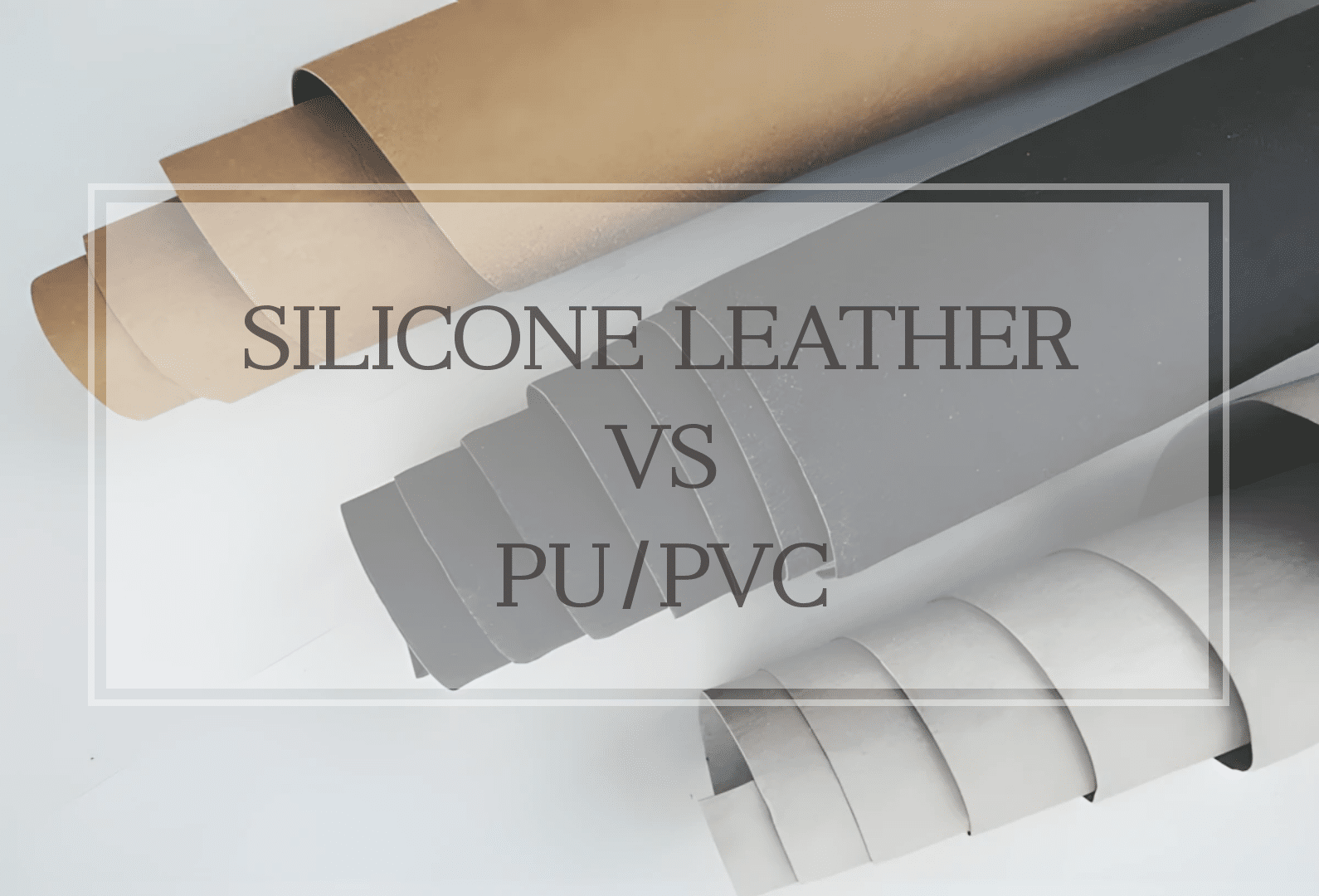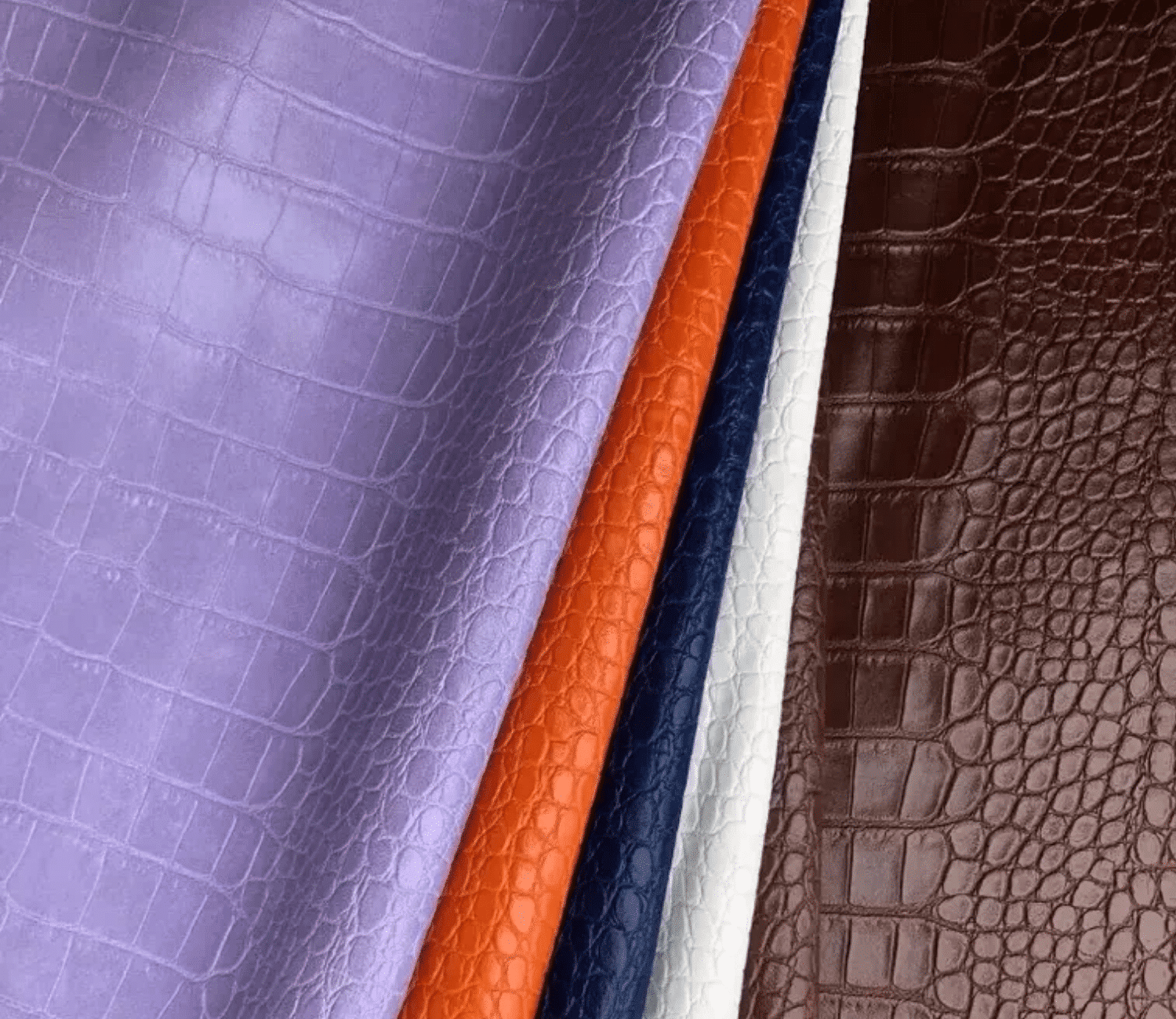Silicone-Based Fabric
vs. PU vs. PVC
– Which One Is Better?
If your industry includes private jet interiors, high-end automotive interiors, or healthcare environments (serving children, pregnant women, and patients requiring special care), this material is an excellent choice to offer your clients.

Introduction: The Rise of Silicone-Based Fabric
When it comes to synthetic leather, three dominant options stand out: PU leather, PVC leather, and silicone-based fabric. Each material offers unique benefits, making them suitable for different industries and applications. However, with increasing demand for eco-friendly, high-performance, and long-lasting materials, the debate continues—which one is truly the best?
As businesses and consumers shift towards sustainable and durable alternatives, silicone fabric is rapidly emerging as the superior choice. But how does it compare to PU and PVC leather in terms of durability, environmental impact, maintenance, and cost-effectiveness?
In this guide, we’ll break down the key differences between these three materials, explore their strengths and weaknesses, and help you determine which synthetic leather best suits your needs.
Understanding PU, PVC, and Silicone-Based Fabric
PU, PVC, and silicone leather are the three most common synthetic leather types. While they may look similar, their compositions, benefits, and drawbacks vary significantly. Below, we break down each material in detail to help you make an informed decision.
What Is PU Leather?
PU leather is a popular synthetic alternative to real leather, often used in fashion, furniture, and accessories. But how is it made, and what are its pros and cons?
Composition of PU Leather
Understanding the composition of PU leather helps determine its durability and environmental impact.
- Made by coating a fabric base with polyurethane.
- May contain layers of natural leather or synthetic fibers.
Advantages of PU Leather
PU leather is widely chosen for its affordability and soft texture. Here’s why many industries prefer it:
- ✔ Soft & Flexible – Feels smooth and similar to real leather.
- ✔ More Breathable Than PVC – Allows better air circulation than PVC.
- ✔ Cost-Effective – More affordable, widely used in fashion and furniture.
Disadvantages of PU Leather
Despite its advantages, PU leather also has some drawbacks that should be considered.
- ✖ Less Durable – Prone to peeling and cracking over time.
- ✖ Not Fully Eco-Friendly – Made from petroleum-based chemicals, not biodegradable.
Common Applications of PU Leather
PU leather is a versatile material used in many industries. Some of its most common applications include:
- Mainly used for handbags, shoes, furniture upholstery, and fashion accessories.

What Is PVC Leather?
PVC leather is another widely used synthetic leather option. But how does it compare to PU and silicone leather?
Composition of PVC Leather
The structure of PVC leather gives it unique properties, especially in waterproofing.
- Made from a polyvinyl chloride (PVC) coating and a fabric base.
- Contains plasticizers for flexibility, but some formulations may not be eco-friendly.
Advantages of PVC Leather
PVC leather stands out in applications requiring durability and water resistance.
- ✔ Highly Water-Resistant – Excellent waterproof properties.
- ✔ Low Maintenance – Easy to clean and stain-resistant.
- ✔ Cost-Effective – Affordable, suitable for mass production.
Disadvantages of PVC Leather
However, PVC leather also has limitations, particularly in comfort and environmental impact.
- ✖ Less Breathable – Poor air circulation, may feel uncomfortable over time.
- ✖ Contains Plasticizers – Some products may include potentially harmful additives.
Common Applications of PVC Leather
Due to its durability and water resistance, PVC leather is often used in the following industries:
- Commonly used in automotive interiors, marine upholstery, restaurant seating, and budget furniture.

What Is Silicone-Based Fabric?
Silicone-based fabric is gaining popularity as a premium alternative to PU and PVC. But what makes it stand out?
Composition of Silicone Fabric
Silicone-Based fabric is unique in that it is free from toxic chemicals and plasticizers.
- Made from a high-performance silicone coating applied to a fabric base.
- 100% non-toxic, free from plasticizers, solvents, and harmful chemicals.
Advantages of Silicone Leather
Compared to PU and PVC, silicone leather offers superior performance in multiple aspects:
- ✔ Ultra-Durable & Long-Lasting – Resistant to cracking, abrasion, and wear.
- ✔ 100% Eco-Friendly & Non-Toxic – Completely safe and environmentally friendly.
- ✔ Waterproof, Heat-Resistant & Stain-Resistant – Resists heat, water, and stains.
- ✔ Easy to Clean & Maintain – Low maintenance, simple cleaning process.
Disadvantages of Silicone-Based Upholstery Material
Despite its many advantages, there are still some factors to consider before choosing silicone based fabric.
- ✖ Higher Initial Cost – More expensive upfront than PU and PVC, but offers better long-term value.
Common Applications of Silicone-Based Upholstery Material
Silicone based upholstery material is increasingly adopted by high-end industries looking for premium, eco-friendly materials.
- Commonly used in luxury furniture, high-end automotive interiors, private jet seating, medical environments, and sustainable premium fashion accessories.


|
Feature |
Silicone-Based Fabric |
PU Leather |
PVC Leather |
Durability |
✅✅✅ Extremely durable, resistant to aging & cracking |
❌ Can crack & peel over time |
✅ Durable, but stiff |
Water Resistance |
✅✅✅ 100% waterproof |
✅ Water-resistant but not waterproof |
✅✅ Highly water-resistant |
Heat & Fire Resistance |
✅✅✅ High heat & fire resistance |
❌ Low resistance, melts easily |
✅ Moderate resistance |
Eco-Friendliness |
✅✅✅ 100% non-toxic, no VOCs |
❌ Contains solvents & chemicals |
❌ Contains plasticizers, not eco-friendly |
Breathability |
✅✅ More breathable than PVC |
✅✅✅ Best breathability |
❌ Poor breathability |
Softness & Flexibility |
✅✅ Soft & flexible |
✅✅✅ Softest |
❌ Stiff & less comfortable |
Cost |
❌ Higher initial cost |
✅ Lower cost |
✅ Affordable |
Maintenance |
✅✅✅ Easy to clean, stain-resistant |
❌ Can absorb stains, harder to clean |
✅ Easy to wipe clean |
Who Benefits the Most from Silicone-Based Upholstery Material?
If your industry includes private jet interiors, high-end automotive interiors, or healthcare environments (serving children, pregnant women, and patients requiring special care), this material is an excellent choice to offer your clients. Which caters to premium, eco-conscious, or durability-focused customers, silicone fabric is the best material to enhance your product offerings and meet market demands!
Conclusion: Is Silicone-Based Upholstery Worth It?
Silicone fabric has proven to be a game-changer in synthetic materials, offering unmatched durability, sustainability, and performance. While PU and PVC leather remain widely used due to their affordability, silicone-based upholstery material stands out as the superior choice for industries that prioritize longevity, eco-friendliness, and high-end appeal.
Key Takeaways
- Superior Durability – Unlike PU and PVC, silicone leather resists cracking, peeling, and wear over time.
- Eco-Friendly & Non-Toxic – 100% free from plasticizers and harmful chemicals, making it safe for people and the environment.
- Ideal for Premium Markets – Preferred by luxury automotive, aviation, furniture, and healthcare industries.
- Higher Initial Cost, Greater Long-Term Value – While it costs more upfront, its longevity and performance make it a cost-effective investment.
Get a Free Sample & Start Exploring Silicone Fabric
Want to experience the benefits of silicone leather firsthand? Contact us today for a free sample, and let’s create a more sustainable, high-performance future together!
